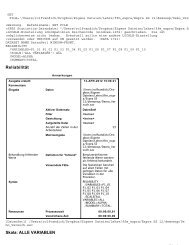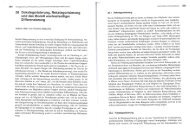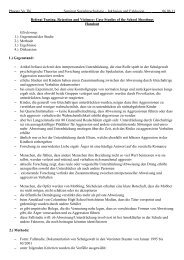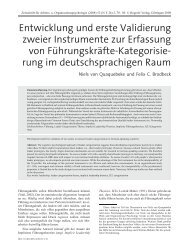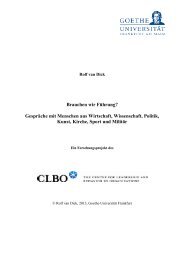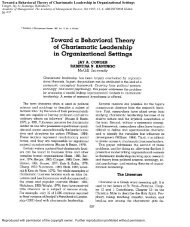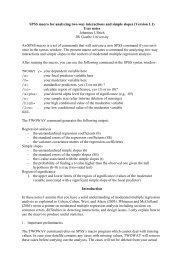Social Identity Theory and Self-categorization Theory: A Historical ...
Social Identity Theory and Self-categorization Theory: A Historical ...
Social Identity Theory and Self-categorization Theory: A Historical ...
You also want an ePaper? Increase the reach of your titles
YUMPU automatically turns print PDFs into web optimized ePapers that Google loves.
<strong>Social</strong> <strong>Identity</strong> <strong>Theory</strong> <strong>and</strong> <strong>Self</strong>-<strong>categorization</strong> <strong>Theory</strong> 209<br />
prototype is not an objective reality, but rather a subjective sense of the<br />
defining attributes of a social category that fluctuates according to context.<br />
The group identity not only describes what it is to be a group member,<br />
but also prescribes what kinds of attitudes, emotions <strong>and</strong> behaviours are<br />
appropriate in a given context. The notion of depersonalization was<br />
assumed to underpin a range of group processes such as cohesion, influence,<br />
conformity, <strong>and</strong> leadership. As such, SCT heralded a more thorough<br />
investigation of intragroup processes than had been possible within the<br />
rubric of SIT, which was preoccupied with intergroup relations.<br />
How the <strong>Social</strong> <strong>Identity</strong> Approach Has Shed New Light on<br />
Old Phenomena<br />
The social identity approach has a strong record of providing fresh<br />
perspectives on old phenomena <strong>and</strong> overturning or qualifying well-worn<br />
assumptions about them. Individual differences explanations of group<br />
processes have been targeted for special attention (Reynolds & Turner,<br />
2006); social identity principles are leaned on, for example, to argue that<br />
social dominance theory has been ‘falsified’ (Turner & Reynolds, 2003;<br />
but see also spirited defences by Sidanius & Pratto, 2003; Sidanius, Pratto,<br />
van Laar, & Levin, 2004). Furthermore, self-<strong>categorization</strong> theorists argued<br />
persuasively that the perceptual shifts associated with <strong>categorization</strong> could<br />
explain the phenomenon of group polarization; that is, the tendency for<br />
an individual’s opinions to shift in the direction already favoured by the<br />
group (Mackie, 1986; Turner, 1991; Turner, Wetherell, & Hogg, 1989).<br />
SCT also led to a reconceptualization of group solidarity <strong>and</strong> cohesiveness.<br />
In contrast to traditional conceptualizations of cohesiveness as a product<br />
of interpersonal attraction, SCT views it in terms of depersonalized liking<br />
for ingroup others based on group prototypicality (Hogg & Hardie, 1991).<br />
In doing this, SCT reintroduces the emergent group properties of cohesiveness.<br />
The social identity approach also heralded a new perspective on<br />
stereotyping. <strong>Self</strong>-<strong>categorization</strong> theorists critiqued the traditional assumption<br />
that stereotypes are fixed mental representations, the content of which is<br />
generally resistant to change across context. Rather, it was argued that the<br />
content of a stereotype will change depending on the comparative context.<br />
For example, an Australian’s stereotype of Americans shifts depending on<br />
whether Iraq is included as a second comparison group (Haslam, Turner,<br />
Oakes, McGarty, & Hayes, 1992). Proponents of the social identity<br />
approach also took issue with the traditional social cognitive view that<br />
stereotypes are over-simplifications that emerge as a result of our limited<br />
capacity to process social information (the ‘cognitive miser’ approach).<br />
Instead, social identity theorists argued that stereotypes have a social<br />
function, in the sense that they help explain the social world <strong>and</strong> to<br />
legitimize the past <strong>and</strong> current actions of the ingroup. In other words,<br />
stereotyping is a meaning-seeking process wrapped up in the sociohistorical<br />
© 2008 The Author <strong>Social</strong> <strong>and</strong> Personality Psychology Compass 2/1 (2008): 204–222, 10.1111/j.1751-9004.2007.00066.x<br />
Journal Compilation © 2008 Blackwell Publishing Ltd




